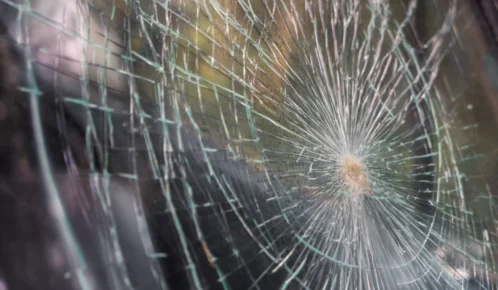An unreasonably dangerous product is a consumer item bearing a design, labeling, or manufacturing defect that can potentially injure or even kill the users. Manufacturers, designers, sellers, and distributors have a legal duty to design and release products that meet the set industry safety standards. These parties must issue adequate warnings about the possible dangers of their products. They can be held financially liable by users who get injured after using dangerous or defective products.
Table of Contents

What Is Product Liability
Product liability describes the legal responsibility of any or all parties involved in the manufacture or distribution of any product for any harm arising from that product. Product liability laws seek to hold suppliers, retailers, manufacturers, or distributors accountable for designing and releasing defective products to the unsuspecting public.
Defective consumer goods result from manufacturing errors, labeling omissions, or flawed designs. Any product can potentially cause serious injuries or even wrongful death, triggering a product liability claim. The usual suspect products include cosmetics, food, medical services and products, pharmaceuticals, tobacco, chemicals, firearms, apparel, and motor vehicles.
A skilled defective product lawyer advises and guides you on pursuing sufficient compensation from the liable party (or parties). The lawyer determines all your medical bills, lost wages, and other damages before engaging the liable party or liable party’s insurer in settlement talks. The lawyer also takes the case to court if the settlement talks fail to yield an acceptable settlement offer.
Types of Product Defects
A defective product poses potential harm to consumers. Such items do not function as intended or expected, and puts you at risk. The three broad-ranging categories of product defects are manufacturing, design, and marketing flaws. Understanding the different types of product defects enables you to file the right type of claim and assemble the evidence necessary to prove your claim.
Manufacturing Defects
Manufacturing defects happen due to errors in the manufacturing phase of a product. These defects only affect some units or select batches of products. A certain percentage of the products differ from others and can cause injuries and harm.
Some examples of manufacturing defects include drugs contaminated by the metallic interiors of the production equipment and children’s swings with brittle chains. Safety belts with a faulty ‘lock’ mechanism might also qualify as manufacturing defects.
If you got into an accident in a car with faulty safety belts, you must prove that even though you were locked in as intended, the crash still caused your injuries. The court needs to eliminate other extenuating causative factors. For instance, you need to show that the prescription drugs you took did not play a part in the accident.
Design Defects
These defects occur in the designing phase. The faulty design goes unnoticed and finds its way to the production line. As such, all the products leaving the factory or manufacturing plant bear these faults.
Some examples of product design defects include the following:
- Getting injured by faulty airbags
- SUVs with a faulty center of gravity that causes them to flip over at corners
- Overheating dryers that start fires
- Defective sunglasses that leave you vulnerable to dangerous ultraviolet rays
- Faulty tires that shred or blow when you hit certain speeds
Marketing defects
Marketing or labeling defects are uniquely different from manufacturing and design faults. The product may work fine and as intended, but the item lacks warning instructions or labels. This mistake effectively makes them unreasonably unsafe to use.
Examples of labeling defects include but are not limited to drugs without proper side effects warnings or drug interaction labels, children’s toys that come without choking risk warnings, and equipment or machines sold without user safety manuals. Electronics lacking electrocution hazard warnings also fall under labeling defects.
You might have grounds for a product liability lawsuit against a manufacturer or distributor if you get injured during your interactions with unlabeled or mislabeled products or equipment. Your lawsuit must prove that your injuries arose from missing or inaccurate safety warnings.
Comparing Different Claims
A consumer who picks a tainted cough syrup bottle can sue the manufacturer. But if a particular cough syrup brand causes heart attacks due to wrong ingredients, it becomes a design defect claim.
If the cough syrup has the right ingredients and works as intended, but you still suffered a heart attack after taking it with other medications for lack of clear warning, you have a labeling defect claim.
Defective Children’s Products
The number of children injured or killed by defective products continues to rise in Illinois and across the nation. KID is an Illinois-based non-profit that champions safer children’s products. The group found that the number of kids harmed by defective children’s products between 2012 and 2013 alone. KID or Kids in Danger released a report titled, ‘Safe Sleep, Safe Play.’
The report focused on the kid’s products recalled in 2012. It showed that even though the recalls were declining, injury incidents in kids were still rising yearly. The common defective products affecting kids include inflatable slides, swing sets, strollers, cribs, travel beds, and baby recliners.
The top reasons cited for recalling nursery products included the risk of lacerations, choking hazards, amputation, or entrapment. Children’s clothing also made the list of potentially harmful consumer goods.
In the KID report, clothes with detachable parts, like buttons, posed significant choking hazards to the young ones. Conversely, some clothing with drawstrings risked causing strangulation in the children. The designers have no option but to recall such reasonably dangerous clothes. Certain apparel got recalled for failing to meet the flammability standards.
Outdoor playing products like swings, slides, bicycles, and trampolines are also featured. Certain toys with small removable parts and rattles also had to be recalled. These toys exposed the kids to significant choking risks.
Manufacturers of kid’s products have a legal duty to design and sell safe items. Reasonably dangerous products put them at risk of consumer lawsuits. These entities are accountable for injuries and other harm to children using these products.
Defective or substandard children’s merchandise can cause serious injuries. They can lead to fatalities in worst-case scenarios. Since the at-fault parties owed you and your children a duty of care, you can hold them accountable to get reasonable compensation.
Seek legal support and representation from a distinguished product liability lawyer. The lawyer will help you build a case against negligent designers, distributors, or manufacturers. The lawyer will also help you determine if you have a decent chance of getting favorable outcomes in court or with an out-of-court deal.
Most product liability attorneys do not ask for upfront legal representation fees. You only pay after recovering compensation through settlement or court award.
How to Prove Causality in Product Liability Claims
Proving that a reasonably dangerous commodity, be it a product or a service, is responsible for your injuries and other losses is not always an easy task. Sometimes, the product may be unreasonably dangerous due to manufacturing or design flaws, but you cannot prove that the product caused your injuries.
The judge (in a bench trial) or the jury (in a jury trial) can rule against you if all you have is circumstantial or unclear evidence. An example is a defective product claim where you get injured after slipping on an icy bridge. You may lose this case if you fail to provide credible evidence to show a direct link between the faulty bridge and your injuries. The defense lawyer might argue that the bridge was working as intended and that the accident resulted from adverse road and weather conditions.
Proving Labeling Defects
You have a right to pursue damages if you get injured by a product with missing, inaccurate, or insufficient warning signs or usage instructions. This consideration applies even if the at-fault party did not necessarily act negligently. The claim seeks to prove that you suffered due to the defendant’s negligence in failing to display proper warning signs or usage instructions on his or her products.
You must provide relevant evidence to establish that the defective product caused injuries despite using it as intended. Alternatively, you can demonstrate that the manufacturer had an obligation to anticipate that misusing the item would cause harm to the consumers.
Proving Design Defects
Proving design defects is harder than establishing manufacturing flaws in products. Design defect claims show that although the product was manufactured as intended, its design had inherent flaws that posed unreasonable harm and injury to users. A technical expert is often called to testify and verify the item’s design errors.
For example, automobile makers will recall entire fleets of particular models upon discovering systemic design flaws. This move prevents piling lawsuits from customers injured or harmed by the endemic issues in the vehicles.
Proving Manufacturing Defects
Product liability claims involving manufacturing defect are much easier to prove than design and labeling defects. For example, one car may explode upon ignition. That problem is unique to that car and, hence, no need to recall other similar products. Here, you just need to prove that your injuries, damages, and losses are a direct consequence of the defective car.
A defective product lawyer who understands your state product liability laws can help you establish causation in defective product claims. The lawyer knows the type of evidence and arguments required to show the liable manufacturer absconded the duty of care by letting the reasonably harmful item reach your hands. You are likelier to receive a payout that covers the full scope of your losses with such a lawyer in your corner.
Legal Theories Defining Faulty Product Claims
In Illinois, product liability claims center around three legal theories, including:
Negligence
A successful product liability claim proves that responsibility falls on another party. The culpable entity, in this case, can be the manufacturer, distributor, or designer. The claim establishes that the at-fault party acted negligently or wrongfully, and that these actions led to injuries and other losses that must be compensated.
Strict Liability
If the manufacturer or designer of the faulty product has a strict liability policy, you can directly sue them for the resulting damages. The manufacturer is liable, even when other parties may also be partly responsible. That means your attorneys do not have to prove negligence on another party to pursue the claim.
Warranty Breaches
This theory holds that the claimant must prove that the at-fault party or entity breached the implied or expressed warranty. So, you must show that the product did not function as intended or as advertised.
Getting Legal Help
Getting a fair settlement is every plaintiff’s desire. These proceeds go towards offsetting the incurred losses and damages. However, processing product liability claims is often an arduous, costly, and time-consuming process.
A successful product liability claim can spell disaster for the brand’s reputation. An implication can trigger an influx of similar unreasonably dangerous product cases from the public, in turn, costing the entity countless losses. As such, these entities cannot afford to lose.
The objective of the defense legal team is to protect its client’s reputation at all costs. Going against these legal experts can be daunting and overwhelming. One misstep and you risk losing the claim on some frivolous legal technicality. Alternatively, the defense might look for ways to reduce your recoverable damages.
So, the best time to hire a personal injury lawyer is soon after you get injured by a defective product. Your lawyer helps to level the playing field as you face the well-endowed team of seasoned lawyers representing the manufacturer and any other liable entity.
The designer, supplier, or manufacturer of reasonably dangerous products bears responsibility for the resulting customer injuries. These entities could be financially liable for letting defective products get into the hands of unsuspecting consumers.
Proving legal liability in product liability cases usually requires the input and testimony of expert witnesses. A product liability lawyer can assist with evidence collection and hiring the right expert witnesses to help you prove liability and receive compensation.



